Sandalwood is one of the most expensive kinds of lumber in the world. It has a distinct aroma and fascinating medicinal properties. Here are some of the many ways in which this heavy yellow wood is used in India.
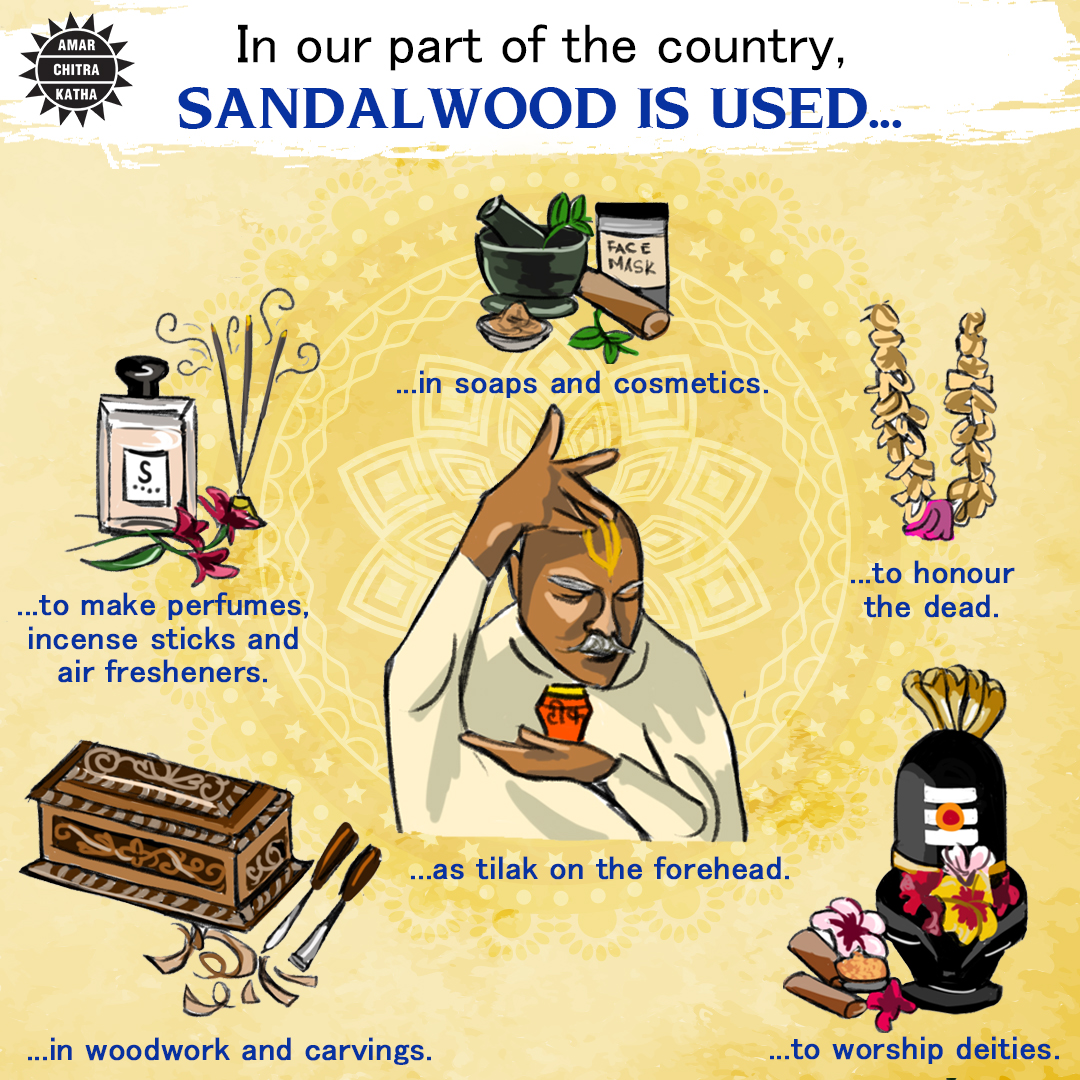

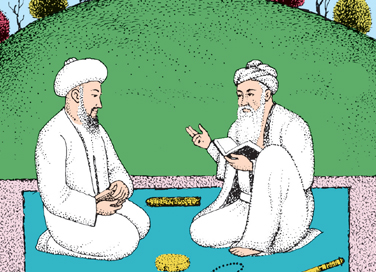
By Swarn Khandpur
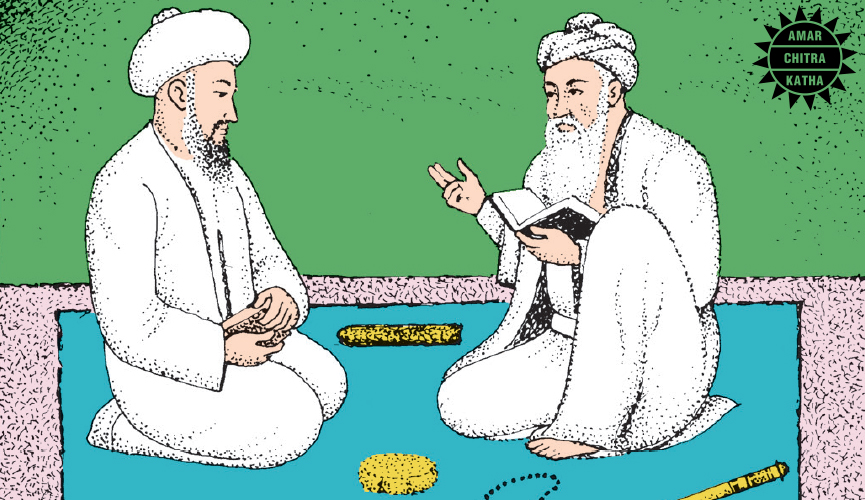
The Sufis were saints or mystics of Persia who formed themselves into several orders and spread out to distant lands. Some of them lived as householders.
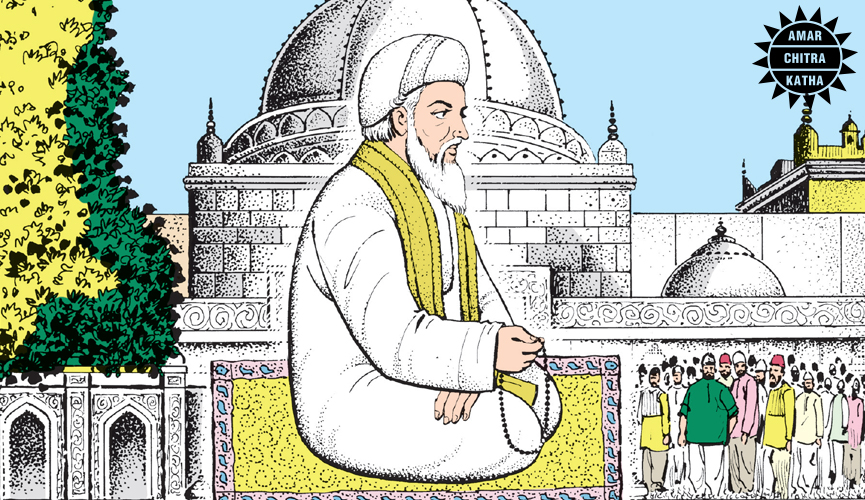
Khwaja Muinnudin of the Chishti order came to India in the 12th century and settled down at Ajmer. His piety and humility endeared him to Hindus and Muslims alike. They affectionately called him Garib Nawaz, one who cherishes the humble. His tomb has become a place of pilgrimage for his following all over the world.
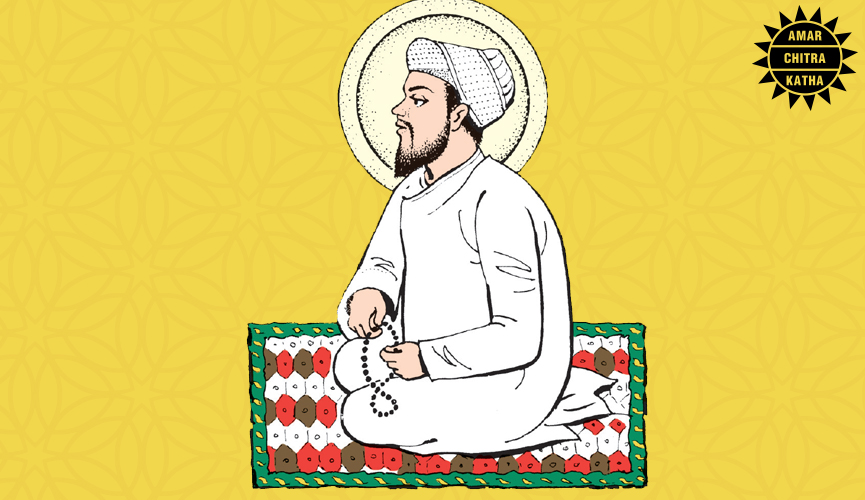
After his raid on Delhi in 1398, Taimur was returning home to Samarkand, laden with gold and riches. Suddenly, at a place in Punjab, the caravan stopped. The horse refused to move. Taimur became furious. When told that the place was sanctified, Taimur demanded to know by whom. A voice answered:
“Baba Farid, the king of kings.”
Taimur, the story goes, bowed to the memory of the saint and spent the night at the Dargah (or tomb) of Baba Farid.
Baba Farid was popularly known as Ganj-Shakkar or the treasurer of sweetness. It is said that, as a child, he would get some sugar from his mother after every prayer. One day, she forgot to put it under the prayer mat. But, by some divine power, sugar did appear when Farid turned to take his reward! His hymns are included in the Granth Sahib, the Holy book of the Sikhs. He would say,
“Do not give me scissors. Give me a needle. I sew, I do not cut.”
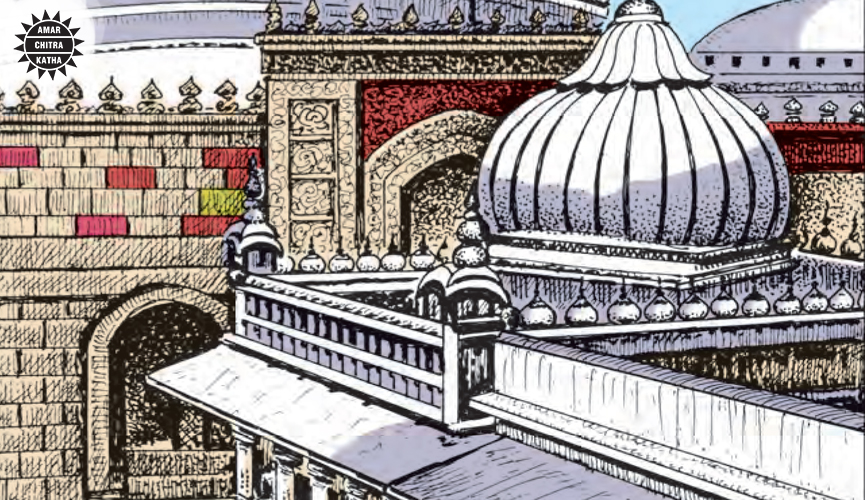
Another great Sufi was Nizamuddin Auliya who settled in Delhi and spent his life in the service of God and his creatures. Around his tomb has grown a settlement popularly referred to as “Sufi Basti”.
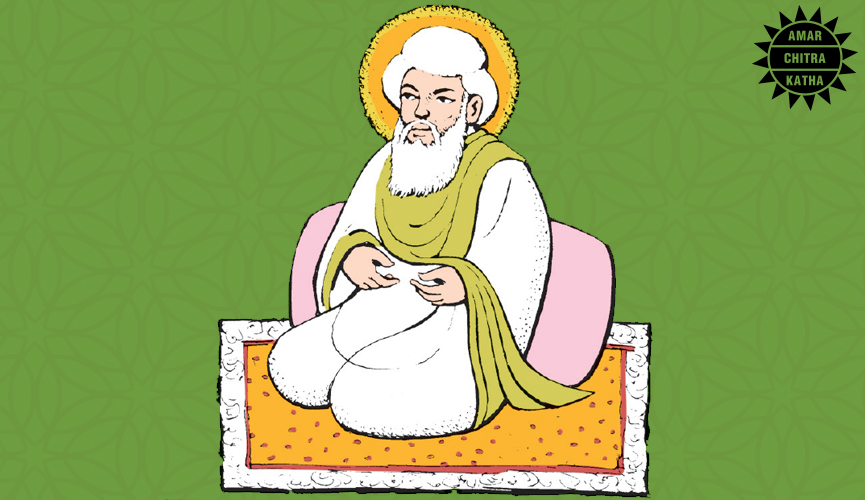
Sheikh Salim Chishti, a Sufi saint during the reign of Emperor Akbar, had settled down at Sikri near Agra. It was with his blessings that a son was born to Akbar. The child, named Salim after the saint, later became known as Emperor Jahangir. Akbar built a marble tomb for the saint at Fatehpur Sikri.
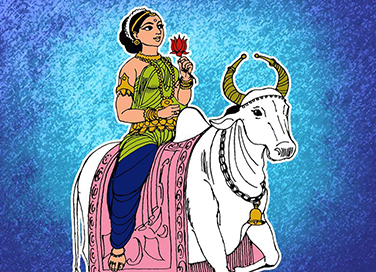
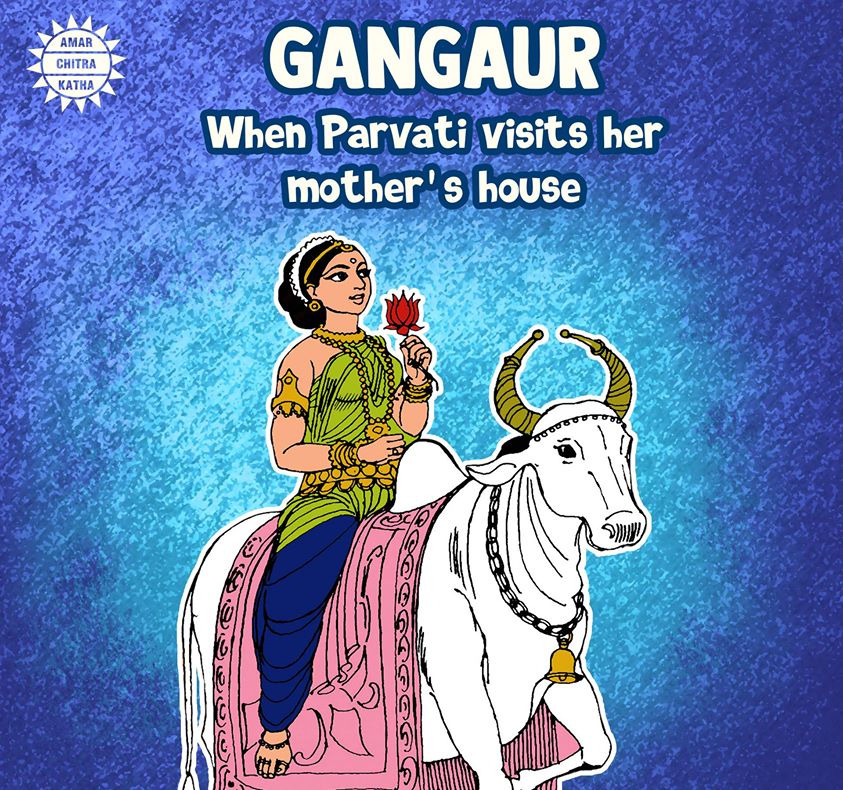
The festival of Gangaur is dedicated to Parvati, the goddess of marriage and fertility, and is celebrated for 18 days by the womenfolk of Rajasthan. The name comes from the words ‘gana’ referring to Shiva and ‘gaur’ which refers to Gauri, another name for Parvati.
As per local legend, the festival marks the first time Parvati visited her mother’s house, after her marriage to Shiva. Small, clay idols of Shiva and Parvati are carried around town during this festival, while worshippers pray for the welfare of their families. On the last day of Gangaur, the clay idols of Shiva and Parvati are immersed in water to signify Parvati’s return to Kailash.
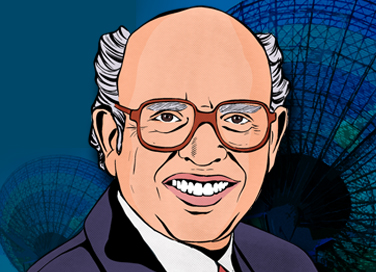
By Srinidhi Murthy
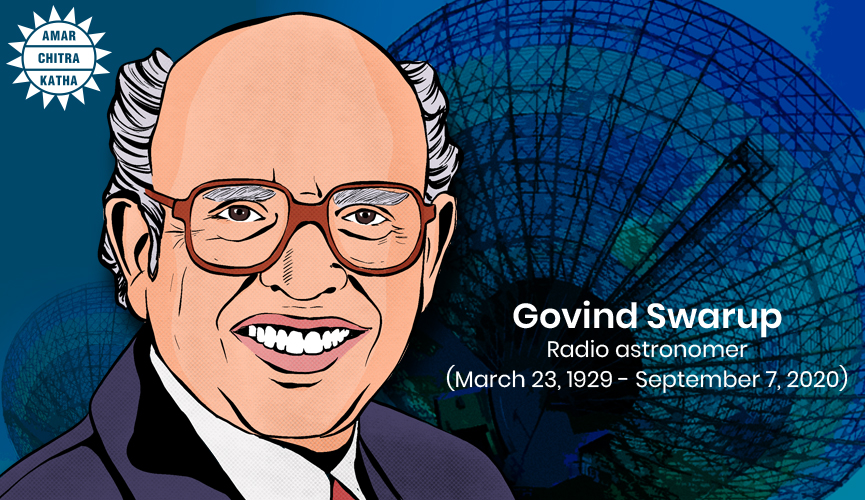
Govind Swarup was one of the pioneers of radio astronomy, responsible for building one of the world’s largest telescopes, making India one of the leading countries in astronomical research. For his immense contribution in the field of astronomy, he is called the Father of Indian Radio Astronomy.
Swarup was born on March 23, 1929, in the town of Thakurdwara in Uttar Pradesh. In one of his interviews, he stated that his mother wanted him to become a civil engineer, but his father and uncle encouraged him to pursue a career in science, a subject very dear to his heart. While pursuing his masters degree at Allahabad University, he got an opportunity to learn from the veteran physicist K.S. Krishnan who taught him electricity magnetism in his first year. In 1947, Swarup also had the good fortune of meeting the Nobel Laureate Sir C.V. Raman.
After obtaining his masters degree from Allahabad University in 1950, Swarup joined the newly formed National Physical Laboratory (NPL) and began to work in the area of paramagnetic resonance, once again under the guidance of K.S. Krishnan. In 1960, he completed his doctorate focused on solar emissions from Harvard University, and later worked as an Assistant Professor at Stanford University. He later joined Tata Institute of Fundamental Research in 1963 after spending seven years in the USA.
While Swarup was in Stanford, Homi Bhabha wrote him to join them as he trusted his abilities to design bigger equipment for them. Faced with this new challenge, he built a parabolic cylinder which could follow the stars with the counter-rotation of earth. He was also the key scientist behind the concept, design and installation of the Ooty Radio Telescope (India) and the Giant Metrewave Radio Telescope (GMRT).
Today, the Giant Metrewave Radio Telescope (GMRT) is used widely by scientists from all over the world to study various astronomical bodies. In 2018, scientists were able to identify the most distant galaxy ever known to man with the help of this telescope, located at a distance of 12 billion light-years away.
When Swarup created the first design of the telescope, India’s funding in science was limited. However, he was an intelligent and resourceful scientist. Swarup figured out one way to minimise cost would be to use stainless steel mesh instead of solid metal for the large dish. This also made it more manoeuvrable. His innovation was widely acclaimed as it hugely reduced the wind load and made it more energy efficient. The GMRT also helped scientists witness the Ophiuchus Supercluster explosion, which is considered to be the biggest explosion in the history of the universe.
Swarup was known as the ever-smiling scientist among his colleagues, taking up impossible tasks and inspiring his colleagues to achieve them. He was a positive person whose ideas about science and education sparkled with creativity. For most of his later life, Swarup resided in Pune with his wife Bina and two children.
Swarup received several awards including the prestigious awards such as Padma Shri in 1973, the URSI Dellinger Medal in 1990, the C.V. Raman Medal in 1993, the Hershel Medal of the Royal Astronomical Society in 2005, and the Grote Reber Medal of Australia in 2007.
Swarup breathed his last on September 7th, 2020, at the age of 91 after a period of short illness. The GMRT, which was proposed and completed by him between 1987-1997, is still regarded as the world’s largest radio telescope operating at a frequency range of about 130 MHz to 1430 MHz. He also made significant contributions in areas such as solar radio emission, interplanetary scintillations, pulsars, radio galaxies, quasars and cosmology.
Each year on National Science Day, the GMRT Observatory in Khodad, Pune, invites students and the general public to visit and listen to explanations of radio astronomy, receiver technology and astronomy. They also encourage students to put up their science experiments at the exhibitions, inspiring them to dream beyond the stars just like Govind Swarup.
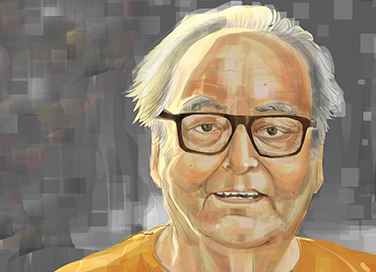
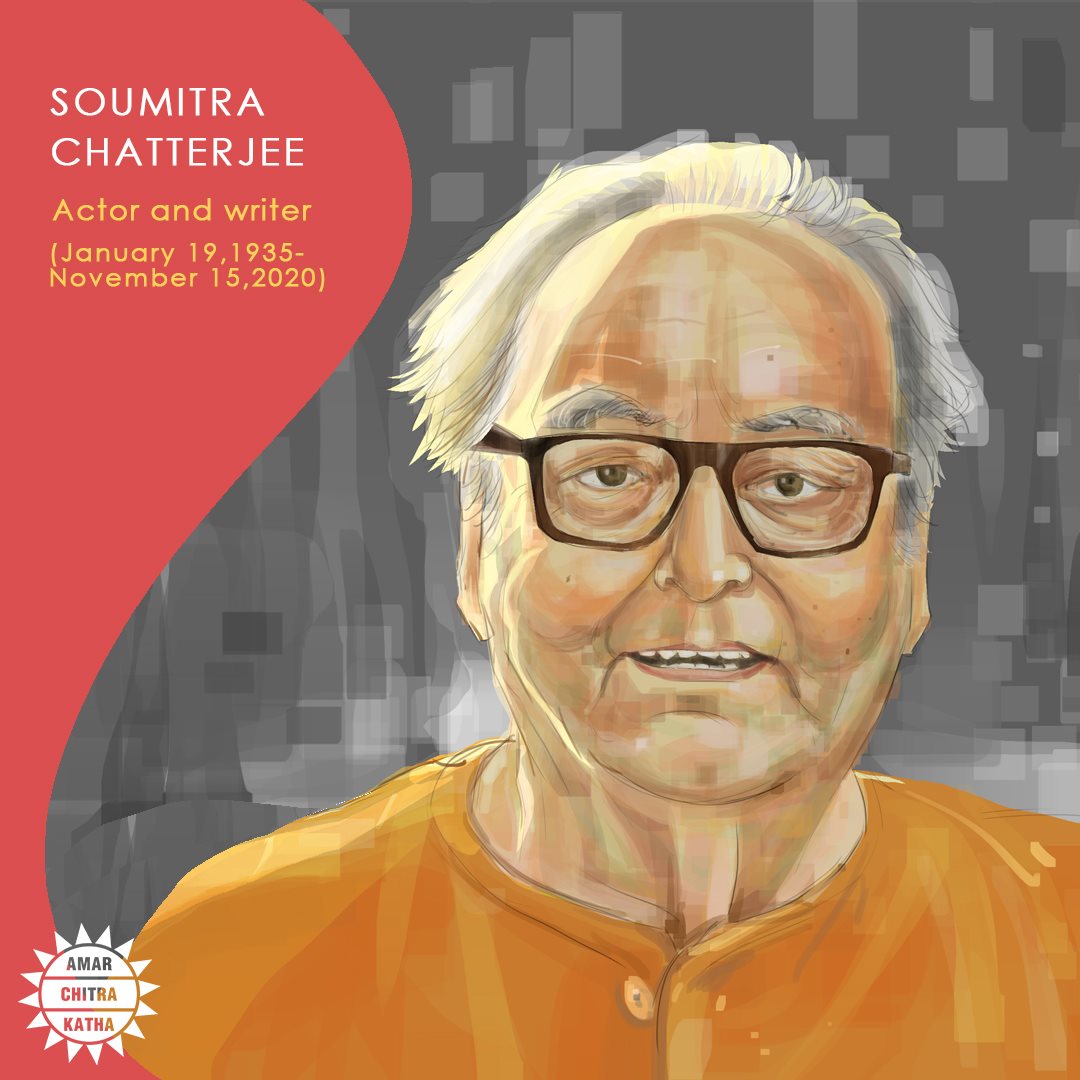
Veteran actor Soumitra Chatterjee passed away on November 15th, 2020. He was a proficient director, playwright, and poet too. Chatterjee performed in more than 300 movies and was a frequent collaborator with legendary Oscar-winning director, Satyajit Ray, transforming the face of Indian cinema with their phenomenal work. Chatterjee had starred in 14 of Ray’s films, with many receiving critical acclaim and awards.
After Ray’s demise in 1992, Chatterjee was beside himself as was evident from an interview he did.
“Not a day passed when I do not think of Ray or discuss him or miss him. He is a constant presence in my life, if not for anything else but for the inspiration I derive when I think about him.”
Chatterjee began his acting career, debuting in Ray’s third movie in the Apu Trilogy, Apur Sansar. Since then, he seamlessly transformed himself into the various characters he played on screen, becoming almost unrecognisable in every role he did. In 1999, Chatterjee received the ‘Officier des Arts et Metiers’, the highest award for arts given by the French government then. He was awarded the Padma Bhushan in 2004 and the Dadasaheb Phalke Award in 2012, not to mention two National Film Awards and a Sangeet Natak Akademi Award among others.
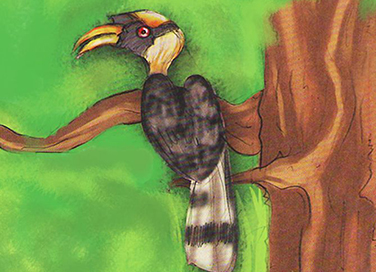
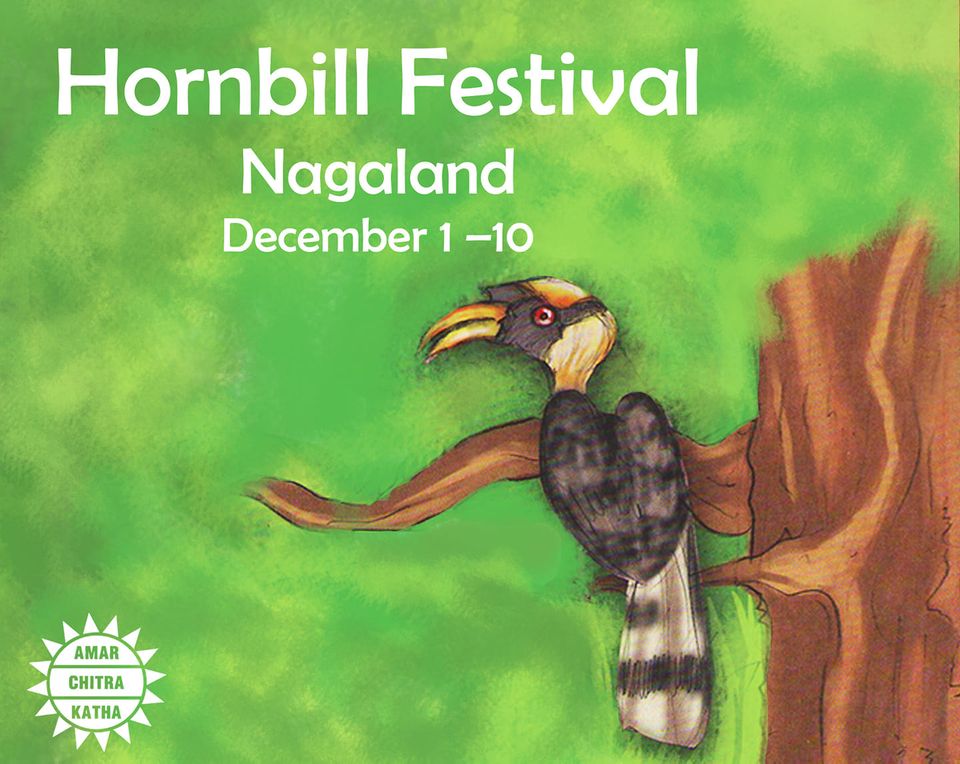
Dubbed the ‘Festival of Festivals’, the Hornbill Festival is celebrated from December 1st to 10th every year in Nagaland. It is named after one of the most captivating birds of the state, appearing in many tribal folktales of Nagaland. The first Hornbill Festival was held in 2000. This year’s festival, although virtual, is going to be grand because it marks its 20th anniversary.
The various tribes that live in Nagaland get the opportunity to interact with each other and showcase their rich cultural heritage. The festival exhibits astounding performances that draws from this cultural legacy, including games, dances, crafts, food fairs, sports, and even religious ceremonies. There has been a considerable rise in the number of tourists visiting the state to witness this grand festival. The festival is held at Kisama, a Naga Heritage Village which is nearly 12 kilometres from Kohima.
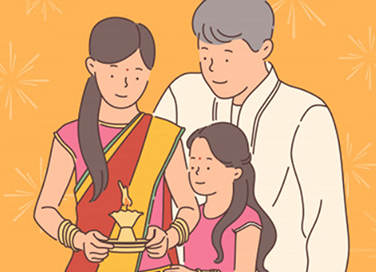
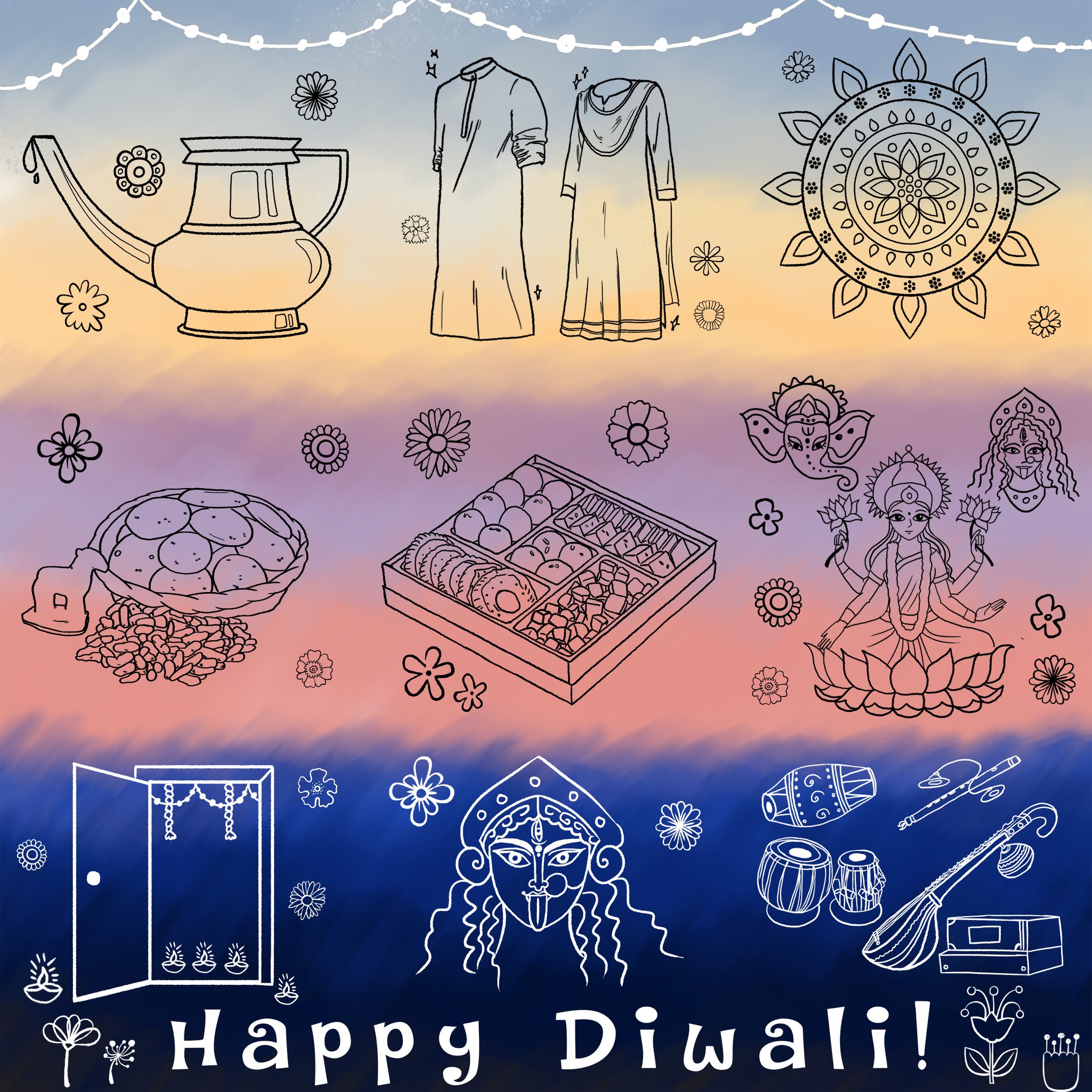
The festival of lights brings in joy and happiness. Different states celebrate the festival in different styles. Here is a glimpse of how the main day of Diwali celebrations unfolds across the country.
Many parts of South India celebrate Diwali by starting the day with a scented oil bath. The oil bath is said to cleanse the body and rejuvenate the senses.
Diwali is said to bring newness and joy. Many people celebrate by wearing new clothes after their morning rituals.
Many people begin their day by preparing their homes for the new year as well. They clean their houses and decorate the area with rangoli and kolam designs.
Kheel (puffed rice) and batasha (sugar candy) are offered to the goddess Lakshmi during Diwali. In some parts of North India, the batasha is also fashioned to resemble different animals. Called khilone, these are popular even today. In olden times, rice would be ready for harvest in time for Diwali and kheel would be the first thing offered to the goddess. Another belief is that Lakshmi likes these food items because they are white.
Diwali is a perfect opportunity to express our love and gratitude for those around us. This is most often done by exchanging lots of sweets with family, friends and neighbours.
Various parts of the country also worship Goddess Lakshmi, Lord Ganesha and Goddess Kali during the festival of Diwali.
It’s believed that lighting up homes with diyas and keeping the doors and windows open on Diwali night beckons to Goddess Lakshmi to enter and bestow her blessings on the household.
For the people of West Bengal, Diwali is synonymous with Kali Puja. Pandals are erected all over the state and Goddess Kali is worshipped, often late into the night.
On Diwali day, some people also listen to Harikatha, an art form that weaves storytelling, poetry, music, dance, drama and philosophy into its fold. The storyteller, called a Haridasa, narrates the life story of saints and gods from Indian epics. It originated in Andhra Pradesh in the 19th century and is performed even today. Did you know that the first Harikatha singer was Narada who sang for Vishnu?
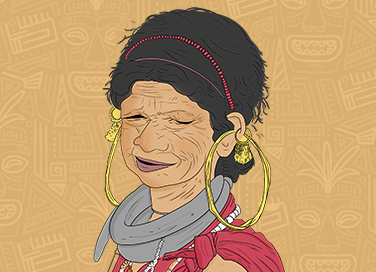
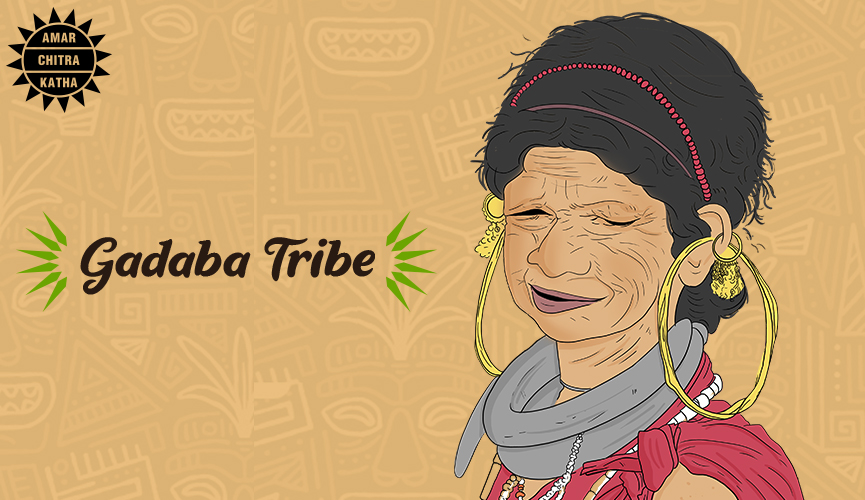
The Gadabas are an ethnic group from Odisha and Andhra Pradesh. They are one of the earliest settlers in the region. The community’s name, Gadaba, means ‘a man carrying weight on his shoulders’. This is said to be derived from their original occupation as load-bearers. Today, their main occupations are cattle-rearing, hunting, and agriculture. They speak the Austro-Asiatic language called Gutob and the Dravidian language called Ollari.
Did you know?
The women of the Gadaba tribe wear neck rings that weigh about 500 to 700 grams. These neck rings cannot be removed without the assistance of the blacksmith. As per tradition, these neck rings are only removed after their death.
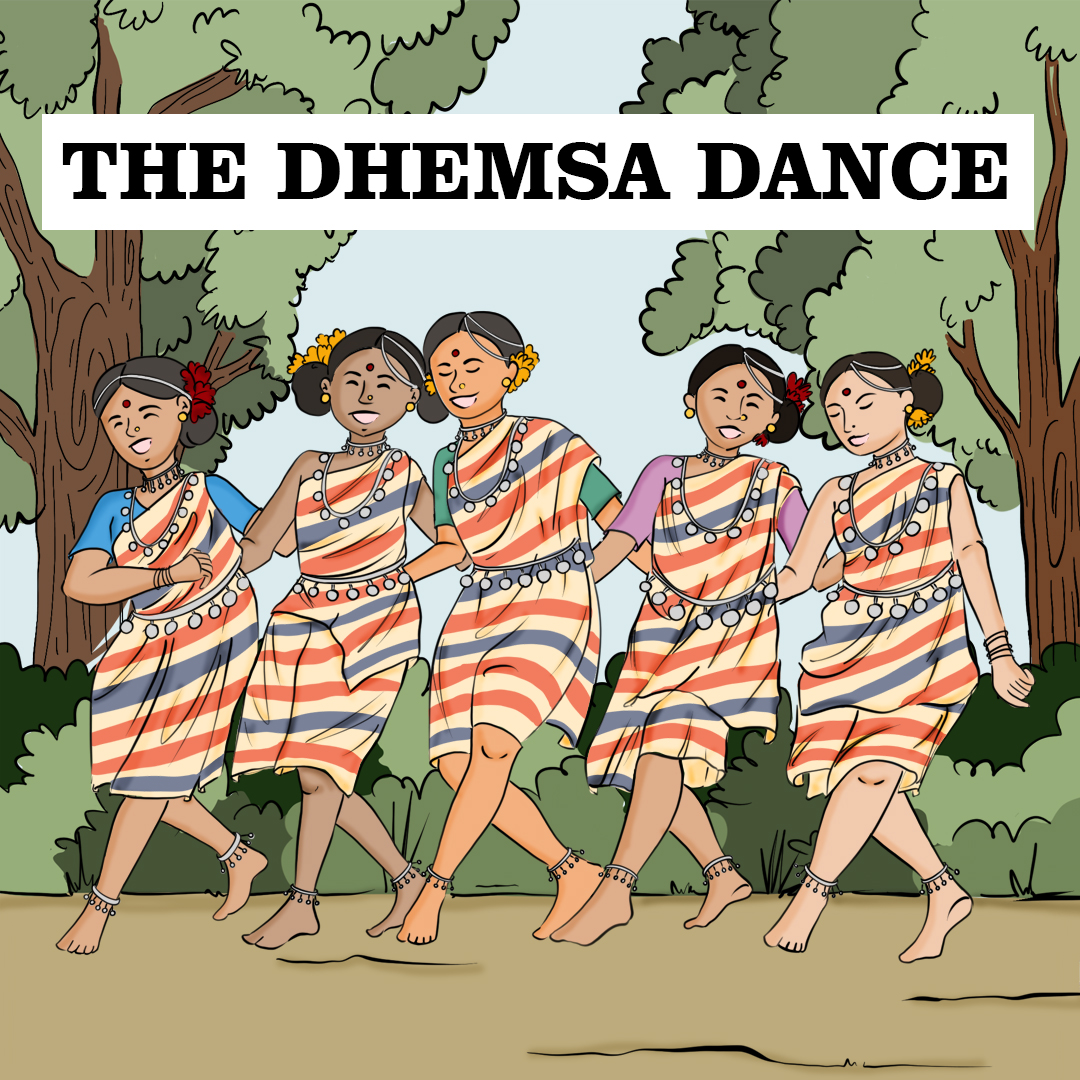
The Gadaba tribe is popular for its tribal dance known as the Dhemsa. It is performed in groups on all kinds of special occasions. The tribe celebrates its joys and cope with sorrows through this folk dance. One can find a Dhemsa troupe in every Gababa village.
The dance is usually performed at night because the tribals also consider the dance as a source of entertainment and relaxation to unwind after a long day. The dance troupe forms a long human chain by standing close to each other, clutching one another’s shoulders or waists. The instruments used to play the music for this dance are as interesting as the dance form itself. The audience will be treated to the sounds of traditional instruments such as the tamak (bongo), the mahuri (a type of clarinet), the dhol (bass drum), and the changu (tambourine). The person playing the mahuri, or the mahuria, leads the music and the instrumentalists follow. The unique composition of traditional attire, rhythmic footsteps, impressive hairdos, and captivating body language is truly a sight to behold.
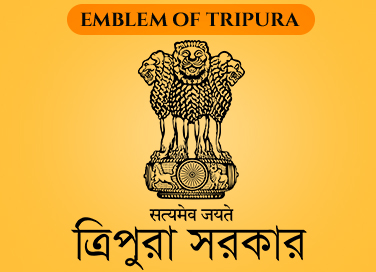
By Samyukhtha Sunil
Tucked amidst the hilly folds of North Eastern India on one side and the densely forested and marshy regions of Bangladesh on the other, Tripura is the third smallest state in India. Being one of the oldest princely states in the country up till recent history, Tripura is home to many indigenous tribes who account for a large part of its total population and is a melting pot for ancient tribal traditions. There are many stories around its origins, one legend traces it all the way back to the Mahabharata where there have been mentions of a political state ruled by a king named Tripur who decided to collectively rule the state named Tripura along with King Yudhisthira. It is also believed that this is how the state got its name.
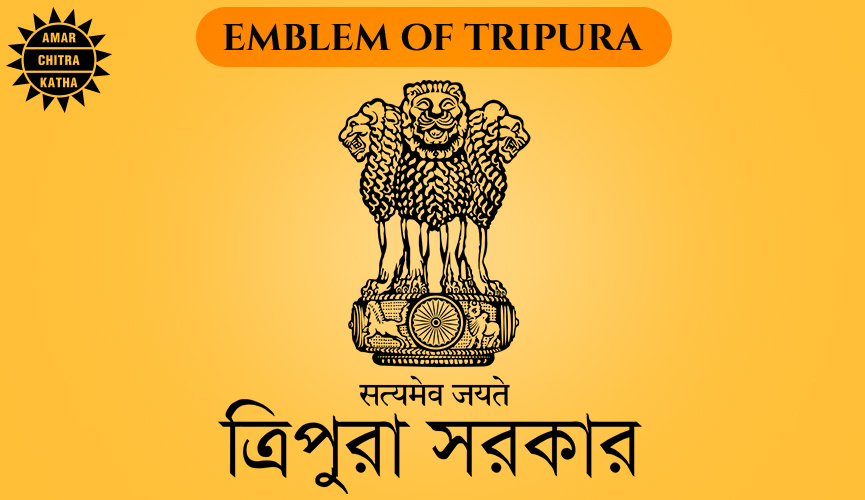
At the peak of its glory, the princely state extended to modern-day Myanmar in the east, the Sunderbans near the Bay of Bengal in the south, and the Brahmaputra basin in the north-west. There have been two very significant periods in the history of Tripura, both of which have been extensively written about in the ancient Bengali poem, ‘Rajamala’. The royal chronicle narrates the extensive lineage of the 144 Maharajas of Tripura in carefully crafted verses put together by the Brahmins in the court of the famous king Dharma Manikya.
This unbroken lineage was established by its founder, a tribal chief named Maha Manikya, in the early 1400s. He took control of Tripura and its neighbouring tribes and assumed the title ‘Manikya’ to celebrate his victory over Bengal. What followed was a genealogy of 185 rulers who had achieved remarkable success through their military conquests and overall expansion of the kingdom. Amongst the prominent rulers were Dharma Manikya and Bijay Manikya. The prolonged rivalry and discord between the Manikyas and the Muslim rulers of Bengal resulted in long-drawn tension and conflict, ultimately leading to a massive Mughal invasion that brought a tragic end to this glorious kingdom.
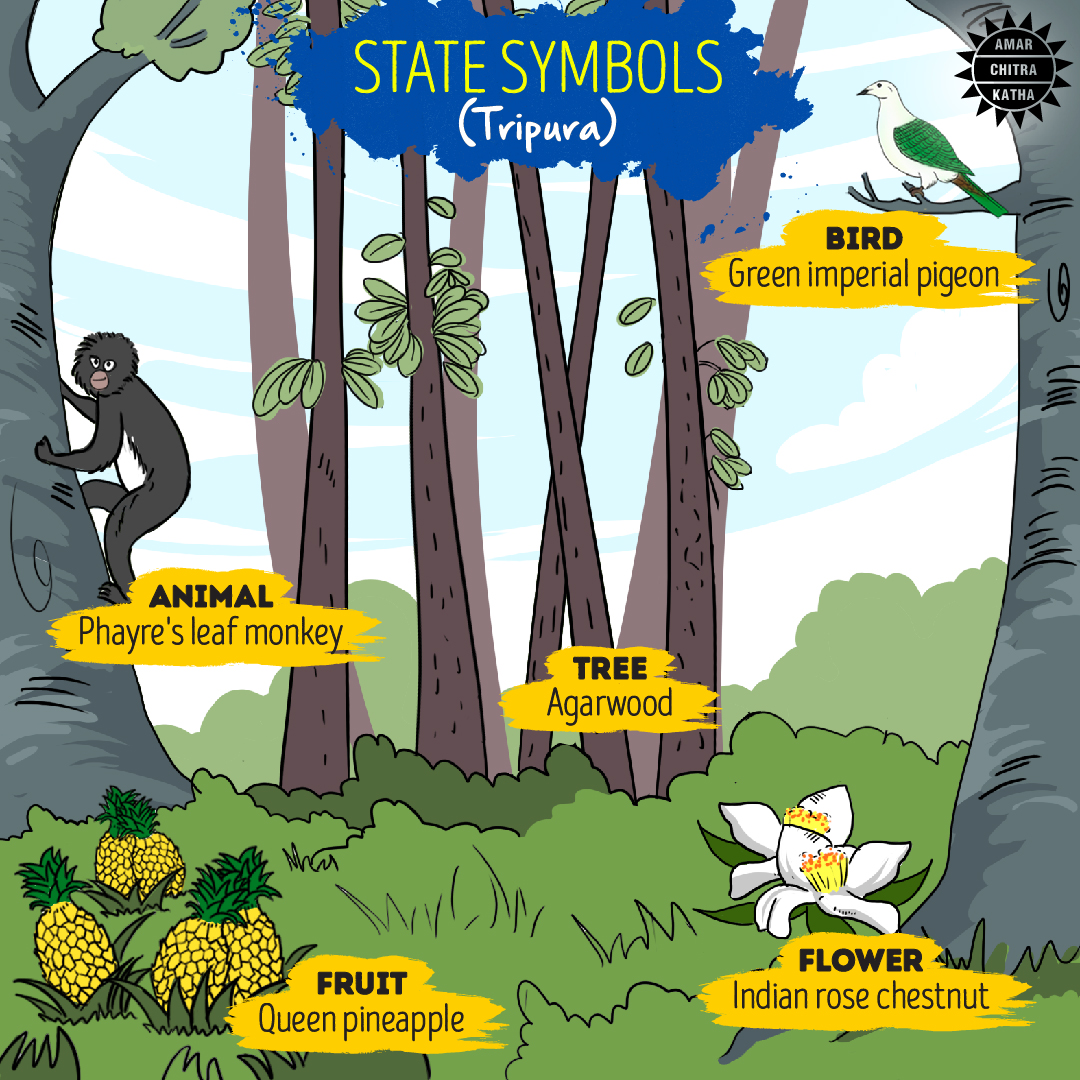
Towards the end of the 16th century, the decline of the Manikya dynasty had begun. King Amar Manikya was one of the dynasty’s last rulers, who fled the kingdom to take refuge on the banks of river Manu. The Mughals established a strong foothold in Chittagong taking advantage of this situation. They soon established control over who would lead the state as their agent, supervising the appointment of the future Tripuri kings. Thus, the dynasty eventually lost its sovereignty over the state. It was only under the rule of king Krishna Manikya that the capital of the kingdom was gradually shifted to Agartala.
When the last ruling Manikya emperor Bir Bikram Kishore Manikya ascended the throne in 1923, Tripura had become a vassal state of sorts with several laws put in place by the East India Company. However, before his death in 1947, Bir ensured Tripura’s accession into a newly independent India. A new forest rule, penal code amendment act and arms rule was put into place under his leadership. He is widely regarded as the architect of Modern Tripura, because of his contribution to Tripura’s overall development at the time. However, he tragically passed away at the age of 39. After the king’s untimely death, his wife Maharani Kanchan Prava Devi ruled as the regent president and aided in the ascent of a political administration in Tripura by appointing the chief minister. Two years later, in September 1949, the Tripura merger agreement was signed, making Tripura a Part C state of sovereign India. This means that the state was henceforth to be governed by chief commissioners appointed by the President of India. Tripura became a full-fledged Indian state on January 21st, 1972.
Tripura continues to share a peaceful relationship with its neighbours. Its regal legacy has led to a harmonious co-existence of its indigenous people, and the advent of modern industries and technology has bridged the state with the rest of the nation. There is a certain sanctity associated with the diversity of the people of Tripura, and it is now home to a varied group of religions, customs and traditions. With its ancient temples, storied history, deep-rooted culture and unmissable attractions, Tripura offers a wonderful insight into the history of a royal kingdom that has only evolved in its charm.
